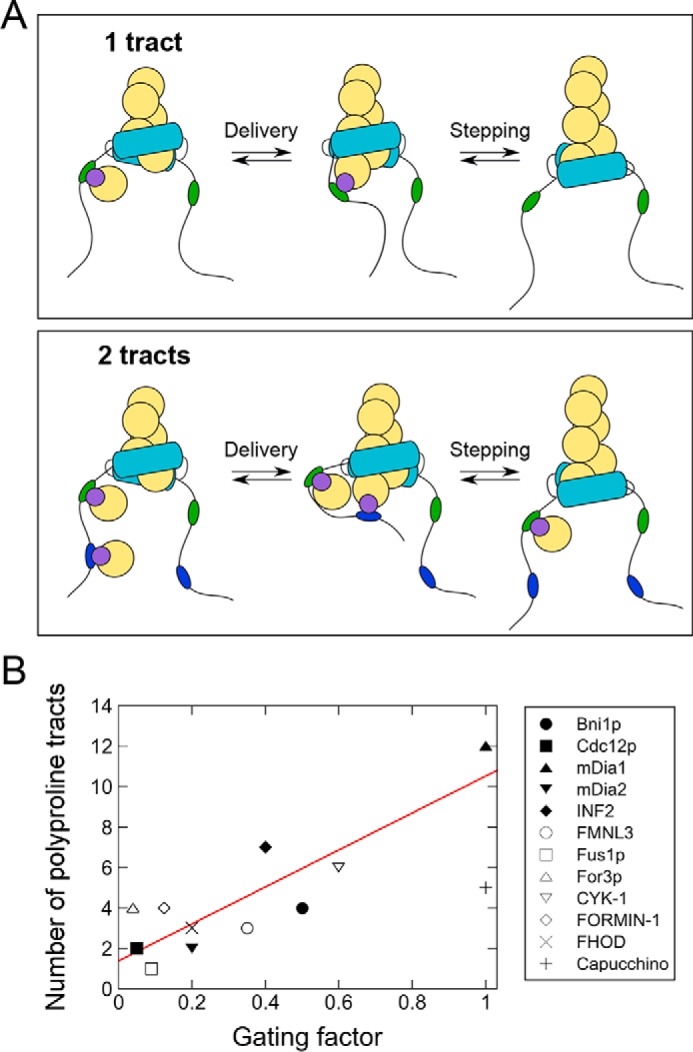Figure 7.

Proposed mechanism for kinetic regulation of FH1 activity by FH2 gating. A, reaction schemes depicting the delivery and incorporation of profilin–actin (purple and yellow circles) at the barbed end of a filament by formins whose FH1 domains encode a single polyproline tract (top row: green ovals) or two polyproline tracts (bottom row: green and blue ovals). When the FH1 domain contains two or more polyproline tracts, competition for delivery of profilin–actin to the barbed end binding site decreases the relative polymerization efficiency of the individual tracts. For simplicity, binding of profilin–actin to only one of the FH1 domains is depicted. B, number of polyproline tracts encoded by FH1 domains, plotted as a function of the reported FH2 gating factor for each formin. The formins represented in this graph are listed in Table 1 along with references to the publications in which their gating factors were reported. For studies that did not explicitly report a gating factor, this number was calculated by dividing the formin-mediated elongation rate measured in the absence of profilin by the elongation rate of filaments with free barbed ends. A linear fit (red line) was applied to the data to obtain the equation: y = 9.15x + 1.4. The data point for Cappuccino was omitted from the fit.
